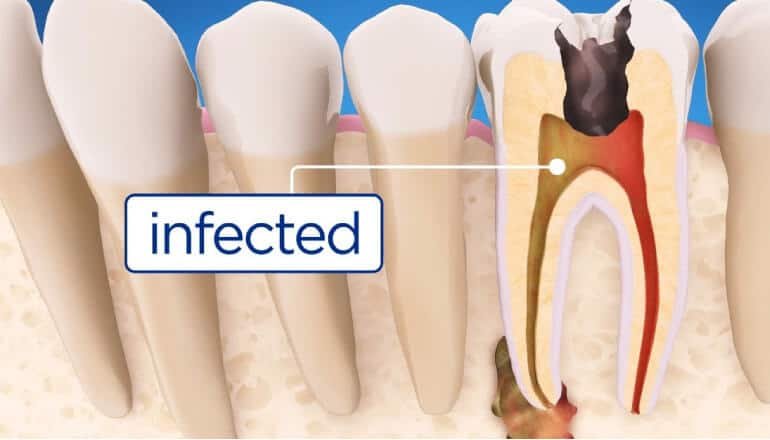Save the tooth with a Root Canal

The signs of tooth infection can be worrying, especially when you haven’t consulted with any dentist recently! However, if your tooth is decaying or infected, it’s essential to intervene in the initial stage & solve the problem before it gets worse!
Well, there are multiple ways to save your teeth & root canal is one of the vital procedures. So, do you know about the procedure, like how it can be performed & helps to save your tooth? Let’s make a discussion on it & try to understand.
What are root canals & what are the signs?
A root canal is a dental treatment to repair or save a tooth from decay. It repairs your tooth from infection & injuries. When a tooth is infected, the nerve and pulp start decaying. During this procedure, the root of the tooth is thoroughly cleaned & then disinfected. The dentist will fill & seal the inside of your tooth to prevent further infection.
When you leave your tooth decaying, it can further lead to pain & discomfort. In the worst cases, you can eventually lose your tooth. The infection can also spread to the gums, worsening your situation. If you don’t want to move for the tooth removal procedure, a root canal treatment is perfect!
Apart from these, a root canal treatment is effective and simple, whereas the other treatments need some time to recover & expensive.
So, do I need a root canal treatment?
You should consult a dentist for tooth canal treatment if you are going through any below tooth condition.
-
Tooth & gum pain
-
Tender & swollen gums
-
Hot & cold sensitivity
-
Cracked & damaged tooth
-
Darkening tooth
-
Cold/hit sensitivity
Some people avoid asking for treatment because they think the problem can work out naturally. The longer you avoid the treatment. More likely, the infection can be spread. This is why it’s better to visit the dentist regularly. This procedure is done under anesthesia, and the dentist takes proper precautions to minimize the pain and discomfort.
